Sticky, sweet lessons learned from making maple syrup at Marcus Whitman
- Oops!Something went wrong.Please try again later.
GORHAM, NY — Those darn squirrels seem to get into everything, even the plastic tubing that leads from a small, wooded area on the Marcus Whitman school campus to a new red-painted sugarhouse.
Earlier that morning, environmental science teacher Jon Pragle had to snip out a piece of tubing that a furry, big-tailed culprit gnawed into, leaving holes in the tube.
Their handiwork may work for a flute, but this tubing is important because it carries the sap from maple trees that students tapped at the beginning of February to make their own maple syrup and other maple products.
Kai Roberts, a Marcus Whitman junior who is originally from Oregon, trudged from the school through the wet grass and mud and into the woods. Her job was to inspect the tap and tubing at one of the maples. Kai is checking the line for holes, because, as she explained, you don’t want air to be pulled along with the sap to the sugarhouse.
Making maple syrup? Kai never thought she would be doing something like this after moving from a school district with thousands of kids in Oregon to Marcus Whitman earlier this school year.
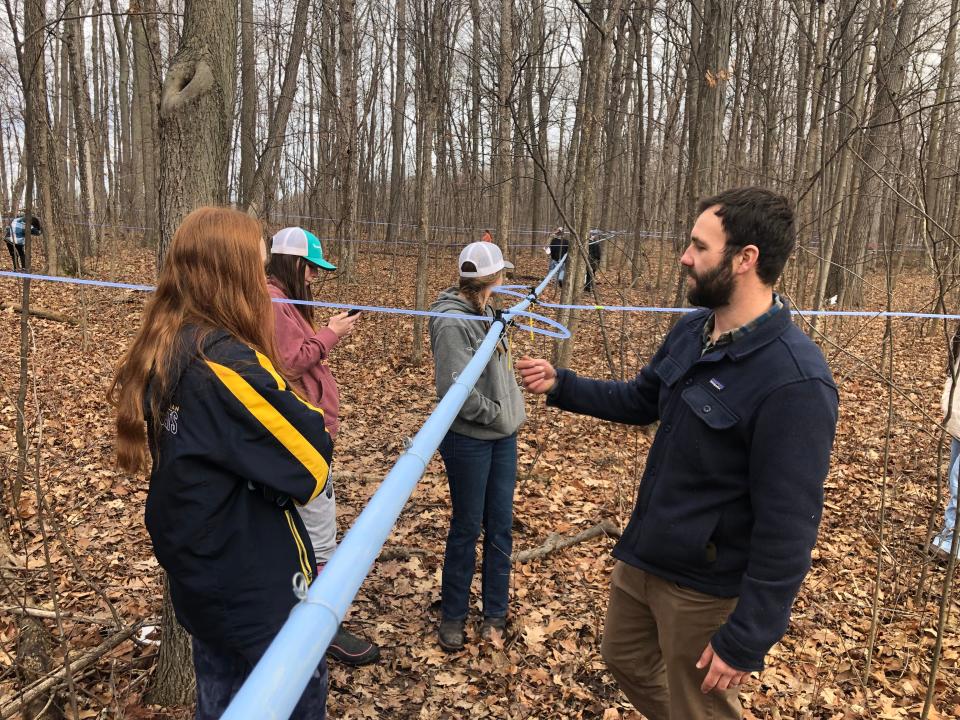
“You don’t get to do a lot of that at bigger schools like at a more rural, country school that has more of a hometown feel,” Kai said.
Marcus Whitman's forest of maples
This 10.3 acres of land resembles a larger northeastern forest, Pragle said. Students have tapped about 60 maples and another 15 or so could have been tapped in their sugarbush.
This little forested oasis also has a lot of young-growth maples, in addition to other species of trees and wildflowers and yes, squirrels.
“I don’t know why it was left originally but we have greatly benefitted from the school leaving that 10 acres of woods,” Pragle said.
In more ways than one.
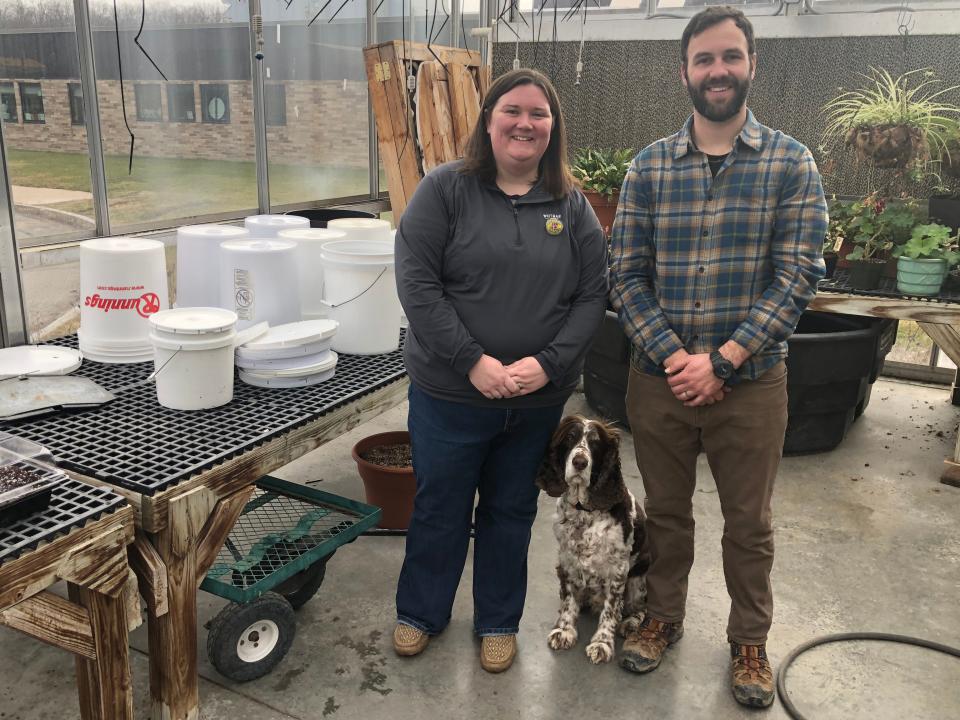
Mary Coolbaugh, who is a Marcus Whitman grad, came back to the school district to teach agriculture from a district in Central New York to teach agriculture.
Coolbaugh learned the ins and outs of making maple syrup in her former district and found it fun. So, she wanted to build on a sweet tradition here that binds students and community together like maple syrup on sticky fingers.
“I always associate maple season with bringing people together and that’s really the end goal that we have,” Coolbaugh said.
A new way of making maple syrup at Marcus Whitman
Maple syrup is nothing new in Ontario County.
According to the U.S. Department of Agriculture’s agricultural census, Ontario County has 38 maple producers and produced 5,493 gallons of maple syrup in 2022. Overall, New York remains behind Vermont as the two leading producers of maple syrup in the country.
Maple production at Marcus Whitman also is a venerable institution.
The school has been tapping trees for well over 20 years. In fact, teacher Henry Savage tapped trees when Coolbaugh was in high school.
They built a small evaporator, which boils down the sap, with cinder blocks, and students and staff have used turkey fryers in their maple syrup production over the years.
“Production has happened here, but it just hasn’t happened in a facility,” Coolbaugh said.
As of this year, it’s been amped up, thanks to the new 320-square-foot sugarhouse, which was purchased through grant money the teachers worked to obtain and serves as an outdoor maple classroom and someday, a resource for the community to use.
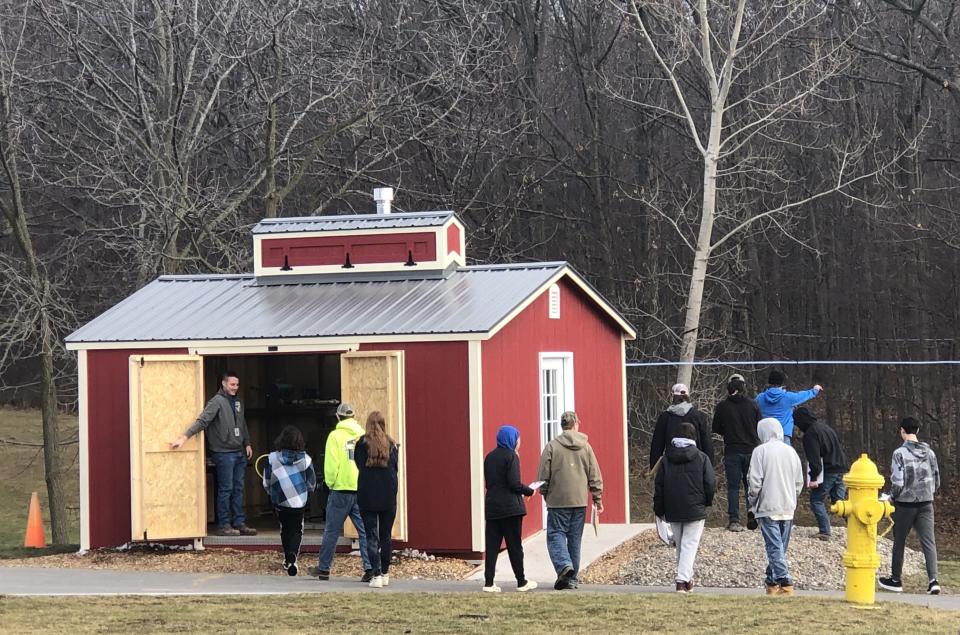
On this day, it’s standing-room-only inside the teeny-tiny sugarhouse as the equipment is fired up for a test run.
What’s called a releaser is hooked to a guzzler pump, and the two pieces of equipment work together to draw the sap from the trees to the sugarhouse by vacuum. Pragle swears it’s only an optical illusion that the sap moves uphill from the woods to the sugarhouse into a 300-gallon tank.
From there, the sap is sent to a reverse osmosis machine, up into a 20-gallon head tank that then feeds the sap into the evaporator.
There are many advantages to the new facility, but all you must do is ask a former student why the sugarhouse was needed. They used to have to lug the sap from the trees to the school in buckets.
If you build it, they will produce maple syrup
A team effort got everything going, although Director of Facilities John Hicks noted the process wasn’t just a snap of the fingers and boom! Sugarhouse.
After all, he and others on the Whitman team didn’t know how to do this at first, but trial and error carried the day as it often does, and many are continuing to learn as they go.
Because this is an agricultural community, people do know how to do this and are always willing to share what they know. A big help was knowing they had to hit a hard-and-fast deadline.
“We just knew we had a deadline of when maple syrup season starts,” Hicks said.
Like, right now.
But, Hicks said, getting to this point was the hard part. It took guts to try this, he said, from the initial vision through the local and state approval process to funding to building and now, to making the product.
“They do it all for the kids, and that’s great. That’s what it’s for, it’s for them to enjoy,” Hicks said. “To be one of the first schools, or the only school, that does it is really neat. It gives our kids an opportunity that they just don’t get at other places.
"It will be really cool when we have some pancakes.”
Marcus Whitman students enjoy making maple syrup
For some, heading outside on a winter day may not be the most fun thing to do, but junior Alison Vaughan looked forward to those 40 minutes outside instead of staying inside a classroom, no matter the weather.
And there were other rewards.
You can make so many different products just from the sap. You can make syrup. Her favorite is the hollow candies made from sap. You can make sugar. You can make lollipops.
“It’s just really cool that you can take sap and turn it into so many different products that everybody really likes,” Alison said.
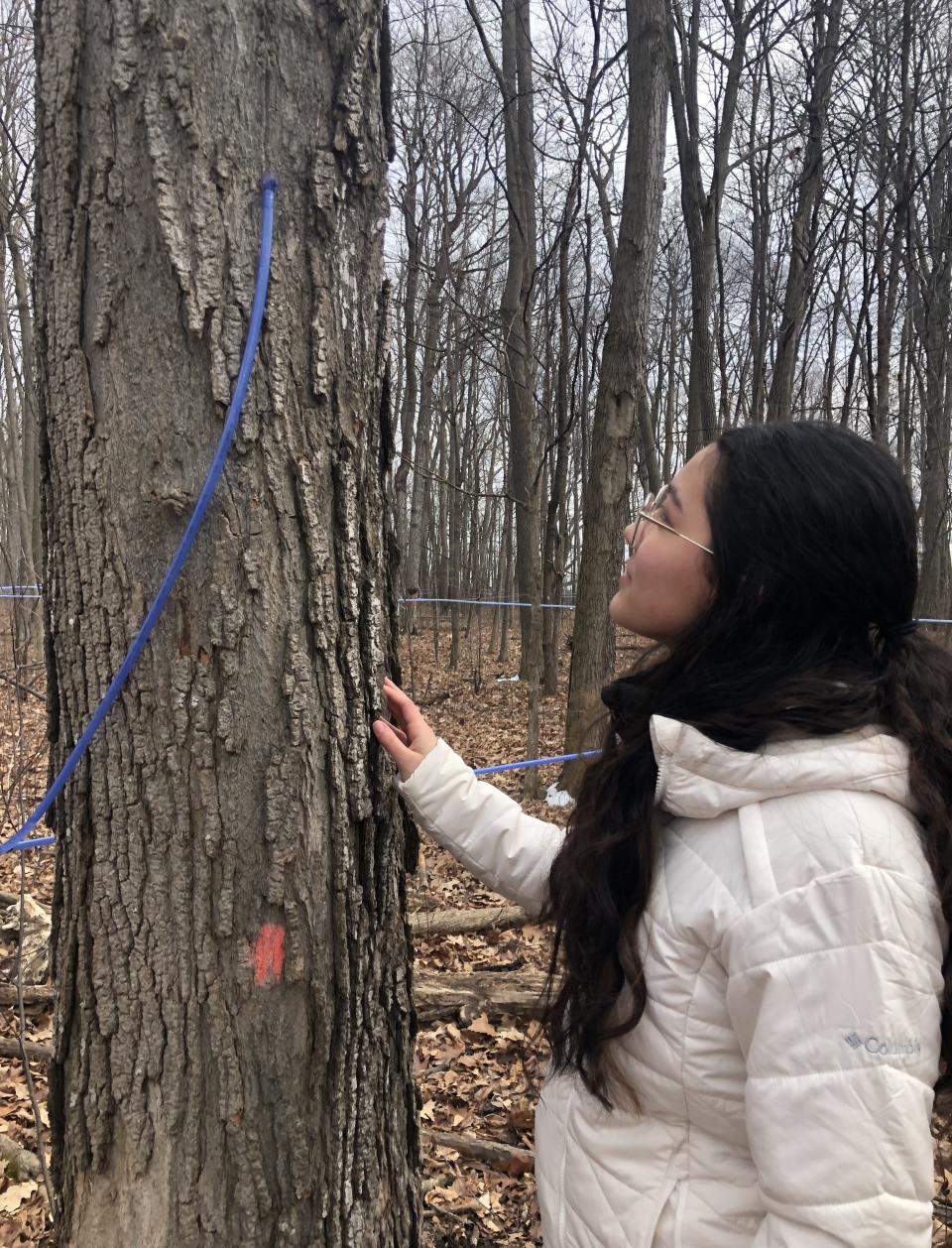
This is the kind of hobby that bonds generations. Knowing how to do this, suddenly, grandson and grandpa are out and doing it together, Pragle said.
“Families are together, out in the woods, talking about trees and the environment and using syrup,” Pragle said.
Senior Ali Gorton's uncle and grandfather always had a small sugarhouse, but as they got older, they had to give up the practice.
The Marcus Whitman senior said she is glad she can pick up where they left off.
“We started doing it here, and I thought it was an interesting process – like real syrup!” Ali said. “We got more into learning about what was going on, and how everything actually worked and not just doing it.”
Ali is proud to make it and, as she discovered, it just tastes so much better than the store-bought “fake” syrup.
“It’s kind of how you think when you make a meal, if you slave over it all day and then you finally get to eat it, you’re just like, ‘Oh my gosh, this is so much better than if I just went out and bought a pizza,’” Alison said.
Lessons learned from maple trees at Marcus Whitman
On a good season, one tap will give you 10 to 15 gallons of sap with a drip system. That can be boiled down to a quart of syrup.
The first time the students tried it, maybe a half gallon was produced, Pragle said.
Eventually, they’d like to produce enough to sell to the community or to other students. And at some point, they hope to make enough to celebrate pancake day in the school cafeteria.
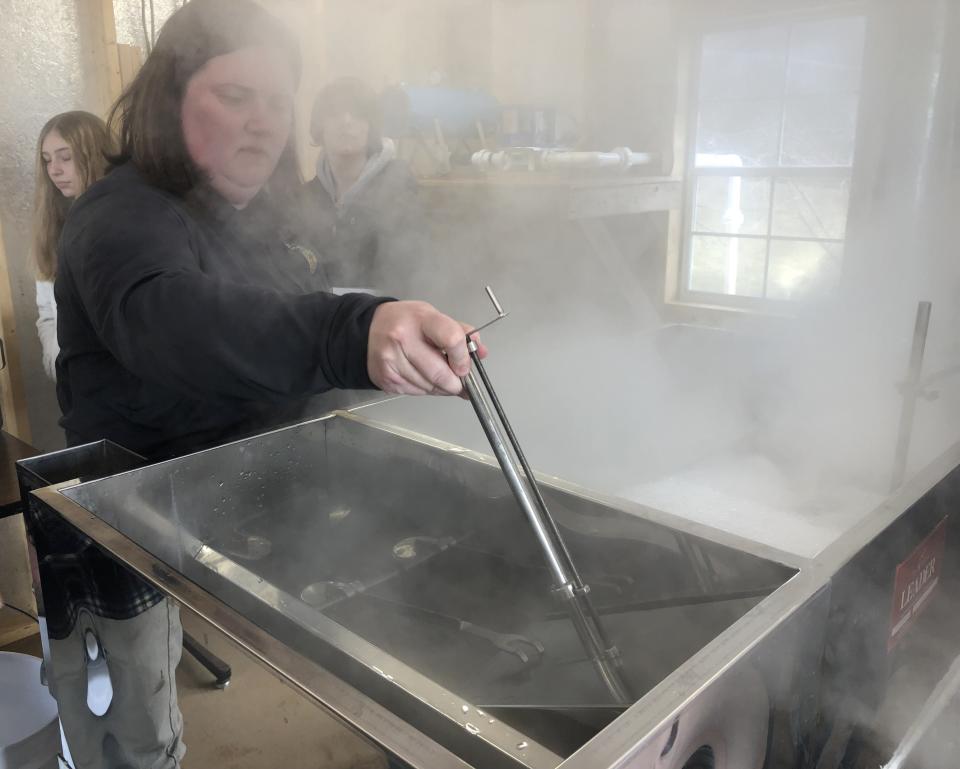
Whether a drop of syrup is produced or enough for an all-you-can-eat breakfast, students are learning useful skills and knowledge that will carry them into adulthood and benefit the entire community.
The students are learning all sorts of lessons besides how to make maple syrup, from food science to nutrition to chemistry to business to math – Google, or better yet, the next time you see him ask Pragle to explain the Jones Rule of 86 when it comes to syrup production.
School agriculture programs like the maple project at Marcus Whitman offer great opportunities for youths to be personally involved with industries and experiences they may not have otherwise, according to Emma Wilson, agriculture awareness and literacy educator for Cornell Cooperative Extension of Ontario County.
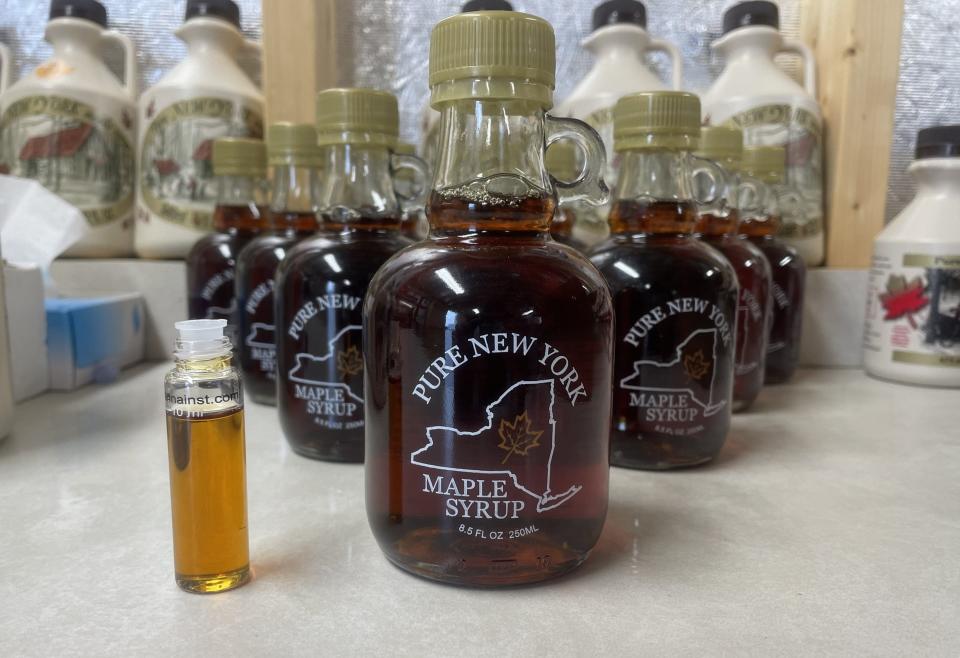
“Maple is a large industry in New York, and in Ontario County, programs like this allow youths to better understand our local economy and how food gets from farmers to consumers,” Wilson said. “Learning about agriculture in the classroom helps youths be more aware of the food and fiber systems that enable and enhance our daily lives, exposes them to potential career opportunities, and prepares them to be responsible consumers later in life.”
History and sustainability are big parts of the process as well.
“Even though maple sugaring is the oldest tradition of the Americas – the indigenous peoples did this originally – it’s a sustainable way to create a product,” Pragle said. “Those trees probably could have been tapped 30 years prior to this and they will remain to be tapped as long as we do it properly long after we’re gone.”
Even with mischievous squirrels trying to tap in and muck up the process.
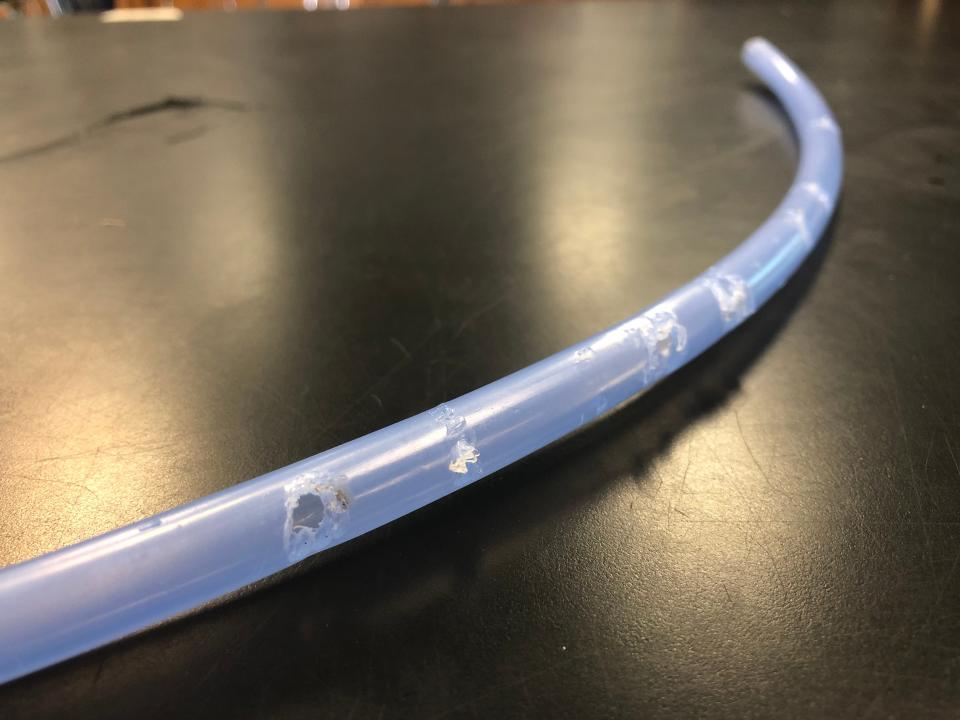
Despite the damage the squirrels caused, the students produced 10 gallons of syrup.
And counting.
Mike Murphy covers Canandaigua and other communities in Ontario County and writes the Eat, Drink and Be Murphy food and drink column. Follow him on X at @MPN_MikeMurphy.
This article originally appeared on MPNnow: Marcus Whitman students learn how to make maple syrup

